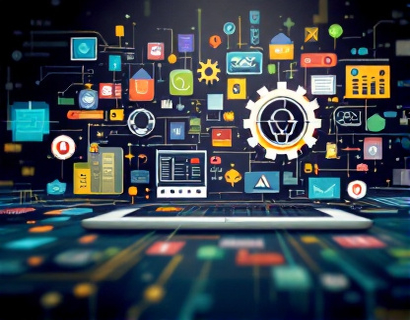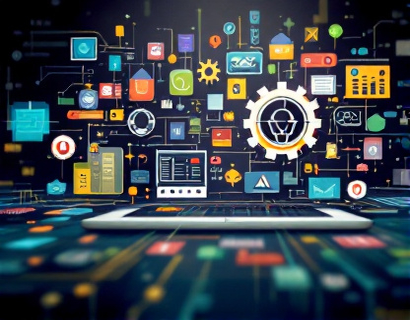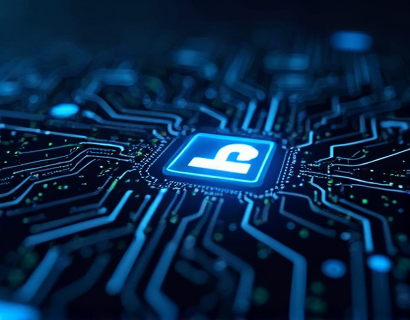AI & Blockchain Integration: A Business User's Essential Guide to Seamless Digital Transformation and Growth
The integration of Artificial Intelligence (AI) and Blockchain technology represents a pivotal shift in the digital landscape, offering businesses unprecedented opportunities for innovation, efficiency, and growth. This guide serves as an essential resource for business leaders aiming to navigate the complexities of integrating these cutting-edge technologies. By providing actionable strategies, this article aims to streamline operations, enhance security, and unlock new growth opportunities in the digital transformation journey.
To begin, it's crucial to understand the individual capabilities and potential of AI and Blockchain before exploring their synergistic integration. AI, with its ability to analyze vast datasets, learn from patterns, and make decisions with minimal human intervention, has revolutionized industries ranging from healthcare to finance. Its applications include predictive analytics, automated customer service, and personalized marketing strategies. On the other hand, Blockchain, known for its role in cryptocurrencies, offers a decentralized, transparent, and secure way to record transactions and manage data. Its immutable ledger ensures data integrity and reduces the risk of fraud.
The integration of AI and Blockchain can lead to transformative outcomes. For instance, AI can enhance the efficiency of Blockchain networks by optimizing consensus mechanisms, reducing energy consumption, and improving transaction processing speeds. Conversely, Blockchain can provide AI systems with a secure and transparent source of data, ensuring the integrity of machine learning models and enhancing trust in AI-driven decisions.
Streamlining Operations with AI & Blockchain
One of the primary benefits of integrating AI and Blockchain is the streamlining of business operations. AI can automate routine tasks, freeing up resources for more strategic activities. When combined with Blockchain, these automation processes gain an additional layer of security and transparency. For example, in supply chain management, AI can predict demand and optimize inventory levels, while Blockchain ensures that every transaction and movement of goods is recorded and verifiable. This dual approach minimizes errors, reduces costs, and enhances overall efficiency.
Another area where AI and Blockchain can significantly impact operations is in contract management. Smart Contracts, self-executing contracts with the terms directly written into code, can be powered by AI to automate and enforce contractual obligations. AI can analyze data to predict potential issues and suggest optimal contract terms, while Blockchain ensures that all parties adhere to the agreed terms in a transparent manner. This combination not only speeds up processes but also reduces the need for intermediaries, lowering transaction costs.
Enhancing Security through AI & Blockchain
Security is a paramount concern for businesses, and the integration of AI and Blockchain offers robust solutions. Blockchain's inherent security features, such as cryptographic hashing and decentralized consensus, make it an ideal technology for protecting sensitive data. AI can further enhance security by detecting and mitigating threats in real-time. Machine learning algorithms can analyze patterns and identify anomalies that may indicate a security breach, allowing for proactive measures to be taken.
For instance, in financial services, AI can monitor transactions for suspicious activities and flag potential fraud, while Blockchain ensures that all transactions are recorded immutably. This dual approach significantly reduces the risk of fraud and cyberattacks. Additionally, AI can help in managing and updating security protocols, ensuring that the system remains resilient against evolving threats.
Unlocking New Growth Opportunities
The integration of AI and Blockchain opens up new avenues for business growth. One such opportunity is in the creation of decentralized applications (dApps) that leverage the strengths of both technologies. dApps can offer new services and products that are more secure, transparent, and efficient. For example, in the insurance industry, AI can assess risk more accurately, while Blockchain can streamline claims processing and ensure transparency in policy management.
Another growth opportunity lies in data monetization. AI can help businesses extract valuable insights from their data, which can be securely shared and monetized using Blockchain. This creates a new revenue stream and fosters a data-driven economy. By ensuring data ownership and control, businesses can build trust with their customers and partners, leading to stronger relationships and increased loyalty.
Challenges and Considerations
While the benefits are significant, integrating AI and Blockchain is not without challenges. One of the primary concerns is the technical complexity involved. Businesses need to invest in skilled personnel or partner with experts who can navigate the intricacies of these technologies. Additionally, the interoperability of AI and Blockchain systems must be carefully managed to ensure seamless integration.
Regulatory compliance is another critical consideration. As both AI and Blockchain are relatively new, the regulatory landscape is still evolving. Businesses must stay informed about local and international regulations to avoid legal pitfalls. Ensuring data privacy and compliance with standards such as GDPR is essential when dealing with sensitive information.
Implementing AI & Blockchain: A Step-by-Step Approach
For businesses looking to integrate AI and Blockchain, a strategic and phased approach is recommended. Here’s a step-by-step guide to get started:
- Assess Current Infrastructure: Evaluate your existing systems and identify areas where AI and Blockchain can add value. Focus on processes that are repetitive, data-intensive, or require high levels of security.
- Define Objectives: Clearly define what you aim to achieve through the integration. Whether it's improving efficiency, enhancing security, or creating new revenue streams, having clear objectives will guide your implementation.
- Build a Skilled Team: Assemble a team with expertise in AI, Blockchain, and your specific industry. Consider partnerships with technology providers or consulting firms if in-house expertise is lacking.
- Pilot Projects: Start with small-scale pilot projects to test the integration. This approach allows you to identify and address issues before a full-scale rollout. Use these pilots to refine your strategies and demonstrate value to stakeholders.
- Scale Gradually: Based on the success of pilot projects, gradually scale the integration to more areas of your business. Continuously monitor performance and make adjustments as needed.
- Ensure Compliance: Stay updated on regulatory requirements and ensure that your AI and Blockchain implementation complies with all relevant laws and standards. This includes data protection, privacy, and industry-specific regulations.
- Foster a Culture of Innovation: Encourage a culture that embraces new technologies and continuous learning. Provide training and resources to your team to stay ahead in the digital transformation journey.
By following these steps, businesses can effectively integrate AI and Blockchain, unlocking new possibilities for growth and efficiency. The key is to approach the integration methodically, with a clear vision and a commitment to innovation.
Conclusion
The integration of AI and Blockchain represents a transformative force in the business world, offering unparalleled opportunities for streamlining operations, enhancing security, and unlocking new growth paths. While the journey may be complex, the rewards are substantial. By understanding the individual strengths of these technologies and strategically integrating them, businesses can stay competitive and thrive in the digital age. This guide has provided a comprehensive overview and actionable strategies to help business leaders navigate this exciting frontier.










































